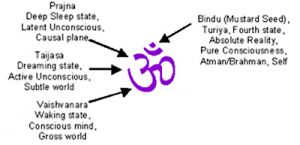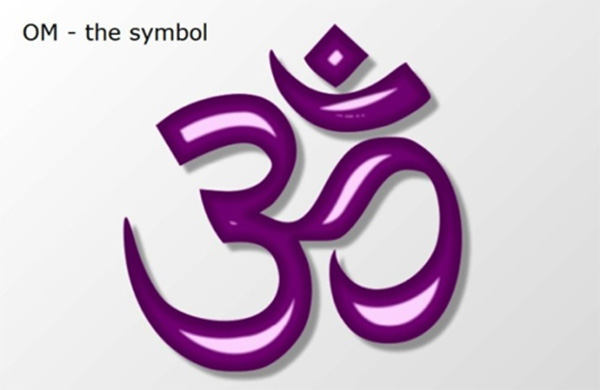Chapter 1 – Concentration/Samadhi Pada – Part 10
Samadhi Attained by Devotion, cont. – Yoga Sutras (1.25-1.29)
This practice takes the student on a direct route inward, systematically penetrating each level of consciousness. Here it will be shown how Ishvara is represented and invoked by OM and how consciousness contains the seed of omniscience which is the very source of the teachings from all the ancient sages.
These next sutras remind us that the sound of OM needs to be remembered with a deep feeling for the true intention of what it represents.
Now on to the sutras …
Yoga Sutra (1.25) – tatra niratishayam sarvajna bijam. Tatra means there, (aligning with Ishvara). Niratishayam is unsurpassed, the highest, limitless. Sarvajna means all-knowing from (sarva, all and jna, to know). Bijam means seed, root, or origin.
Translated to mean: The pure consciousness is also the seed of pure knowledge or omniscience. In other words. Ishvara is unmatched and is the ultimate source of all knowledge, while in us it is simply a seed.
Yoga Sutra (1.26) – sah purvesham api guruh kalena anavachchhedat. Sah is he or that, Purvesham means of the first, former, of the ancients; Api is even, also; Guruh means guru, teacher; Kalena means by time; Anavachchhedat indicates not limited by time, unconditioned, continuous.
From that consciousness (Ishvara) the ancient teachers were instructed. Since it is not limited or conditioned by the constraint of time, Ishvara is the original teacher of all, even the most ancient of teachers, and is not limited by time.
Ishvara, being pure consciousness and eternal in nature, is the direct teacher of all the ancient (perhaps even the first) of the teachers within human history. In other words, some of the original teachers of humanity have learned directly from pure consciousness. This was prior to a human lineage where there is just a passing on of information.
This direct learning from the source always continues to be available. Although the help of human teachers is certainly a useful, if not an essential aid in keeping the student focused on the goal.
Yoga Sutra (1.27) – tasya vachakah pranavah. Tasya means of that, being (Ishvara). Vachakah is a verbal symbol, word, indicator or term. Pranavah is the mantra symbolized by AUM or OM and this symbol always retains its purity.
Translated…The sacred word designating this creative source (Ishvara) is the sound OM, called pranavah.
OM has a high vibrational quality but also has many other meanings. One meaning is a sound or term that denotes pure consciousness (Ishvara) as referred to in the preceding sutras. The word pranavah literally translates as “humming.” The symbol of OM …

Traditional teachers say that to properly chant OM (more clearly pronounced AUM), begin in the throat. Next role out through the mouth and end with the closing of the lips. This implies that OM represents the joining together of all possible sounds. Other mantras are simply a specific characteristic of “a sound” while Om is the totality of all sound. Used as the sound of Ishvara (God), Om implies that Ishvara (God) is ALL, the sum total of creation, existence, and change.
Yoga Sutra (1.28) – tat japah tat artha bhavanam. Tat means its, whose, being. Japah is repeated remembrance, repetition. Tat means its, whose, being. Artha equals meaning. Bhavanam means understanding with devotional feeling, absorbing, anddwelling upon.
Translated: This sound is repeatedly remembered with deep feeling for the full meaning of what it represents. Swami Vivekananda translates it thusly: “The repetition of this (Om) and meditating on its meaning (is the way).”
It is important for the student to remember, not only the vibration (japa), but also the deep meaning of the mantra. They need to avoid performing a merely parrot-like repetition in the mind. One of Raja Yoga’s basic tenets is focused attention (in this case on OM) that results in deeper and more subtle perceptions.
Yoga Sutra (1.29) – tatah pratyak chetana adhigamah api antaraya abhavash cha. Tatah is thence, from this practice. Pratyak is the inner, individual. Chetana means true Self, consciousness. Adhigamah is knowledge, understanding, realization or attainment. Api means also. Antaraya is of obstacles or impediments. Abhavash means absence, disappearance, elimination. Cha means and or also.
Translated this sutra means: From that remembering comes the realization of the individual Self and the removal of obstacles.
Here Patanjali points out two direct benefits that come from the proper practice of the OM mantra:
- Obstacles are removed.
- This is a direct route to Self-realization.
If one can sincerely, devotedly, intensely practice the OM mantra to the depths of its meaning, it is a complete practice in and of itself. Swami Satchidananda summarized this sutra, clarifying it; “Normally, the mind and body limit you, but by holding something infinite, you slowly raise yourself from the finite objects that bind you and transcend them. Through that you get rid of all the obstacles and your path is made easy.”
~Rae Indigo
Next up, this series continues with: (Obstacles and Solutions; Sutras 1.30-1.32)
